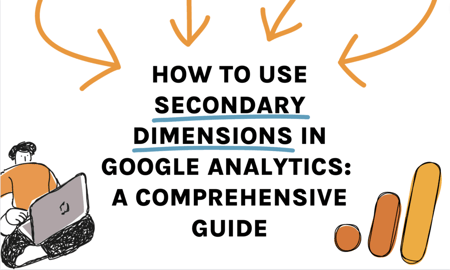SEO Proficiency: Deep Dive into Secondary Dimensions for Specific Metrics
SEO Proficiency: Deep Dive into Secondary Dimensions for Specific Metrics
Blog Article
Transform Your Information Comprehending With Second Dimensions
Exploring data with the lens of secondary dimensions opens a realm of untapped understandings, supplying an extra nuanced point of view on the ins and outs of your dataset. By unraveling the layers beneath the surface metrics, you can discover patterns and partnerships that might have otherwise gone unnoticed, leading the way for notified decision-making and critical optimizations. This tactical usage of second measurements not just improves your data understanding however likewise works as a driver for unlocking the complete possibility of your analytics endeavors.
Advantages of Second Measurements

Secondary dimensions additionally allow organizations to conduct more in-depth efficiency analyses. By layering extra dimensions onto existing information, organizations can evaluate the influence of various variables on crucial metrics, aiding them make more informed decisions. Additional dimensions facilitate the recognition of new opportunities for optimization and growth by discovering relationships that might have otherwise gone undetected. Generally, the usage of second measurements leads to a lot more robust and insightful data evaluation, equipping companies to drive calculated actions based on a much deeper understanding of their data.

Exactly How to Implement Additional Dimensions
To properly carry out secondary dimensions in data evaluation, businesses ought to initially recognize key variables that straighten with their analytical goals and objectives. It is necessary to consider how these second dimensions will provide additional context and deepness to the main information being analyzed.

Analyzing Data With Secondary Measurements
Utilizing secondary measurements in information evaluation improves the deepness and context of understandings originated from main data. By incorporating secondary dimensions into your evaluation, you can gain a more thorough understanding of the connections and patterns within your data. This procedure entails taking a look at the key information through various lenses or point of views, which can disclose covert correlations or fads that might not be right away obvious when evaluating the data utilizing just main dimensions.
Examining data with second measurements permits you to sector and team your data in numerous ways, giving a much more nuanced sight of your dataset. secondary dimensions. This segmentation can aid you determine details elements that might be influencing the results you are studying. By piercing down into the information using second dimensions, try these out you can uncover useful understandings that can assist decision-making and strategy growth
Best Practices for Additional Dimensions
When including second dimensions into data evaluation, precision in specifying the measurements is critical for drawing out significant understandings. It is important to select secondary dimensions that match the primary information successfully.
An additional best technique is to avoid redundancy in dimensions. Ensure that the additional dimensions include new point of views or information to the analysis, instead of replicating info currently existing in the key measurements. This will certainly assist protect against confusion and simplify the interpretation of the data.
In addition, it is necessary to think about the scalability of the analysis when picking second measurements. Select measurements that can be quickly increased or readjusted as needed to suit future data requirements or modifications in analytical focus. By complying with these finest methods, analysts can maximize the value of secondary dimensions in information analysis and gain much deeper insights right into their datasets.
Optimizing Insights Through Additional Measurements
Including additional dimensions purposefully boosts data analysis by giving a deeper understanding of the connections within the dataset (secondary dimensions). By taking full advantage of understandings via second measurements, experts can uncover useful patterns, fads, and dependences that may not be immediately apparent when taking a look at the information via key measurements alone
One key advantage of using additional measurements is the ability to segment Get More Information and filter information more exactly. This segmentation permits a much more granular analysis of details subsets within the dataset, allowing analysts to determine correlations and causations that could have otherwise been forgotten.
Furthermore, second dimensions can assist in contextualizing key information factors by including layers of info that supply a more thorough view of the information. This contextualization is essential for making educated choices based on an alternative understanding of the dataset.
Final Thought
Finally, including additional dimensions in information analysis procedures uses an extra nuanced and detailed understanding of info, bring about improved understandings and critical decision-making. By integrating additional variables that line up with logical objectives, concealed fads and connections can be exposed, supplying a much more in-depth and contextualized view of data. This strategy takes full advantage of the potential for optimization and discovers brand-new possibilities within operations.
On the whole, the use of secondary dimensions leads to much more durable and informative information analysis, empowering organizations to drive tactical activities based on a deeper understanding of their data.
Using secondary dimensions in data evaluation enhances the deepness and context of understandings derived from key information.Assessing data with secondary measurements enables you to segment and team your information in numerous means, supplying a much more nuanced sight of your dataset.When including secondary measurements right you could try this out into information evaluation, precision in specifying the measurements is crucial for drawing out significant insights. Make sure that the second measurements include brand-new perspectives or details to the evaluation, rather than duplicating information already existing in the key measurements.
Report this page